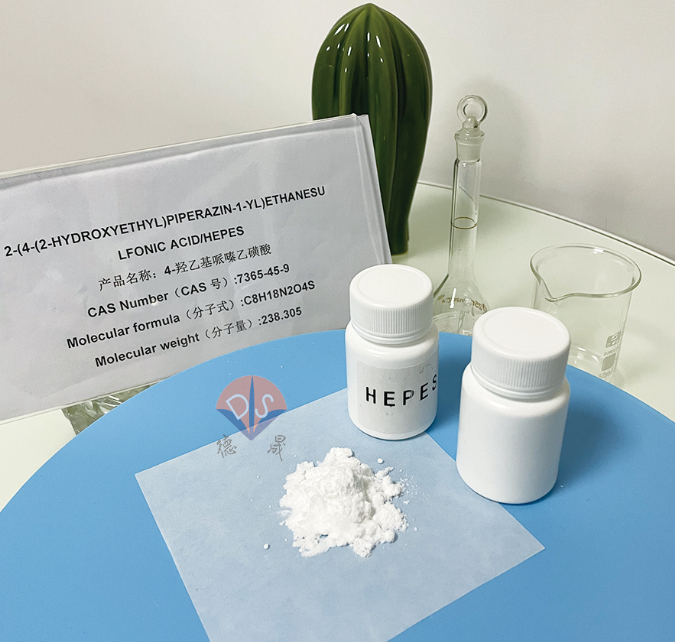Breakthrough protein transfection challenge: HEPES opens a new chapter in biotechnology
Release time:
2025-06-26
In recent years, with the rapid development of modern biotechnology, protein transfection technology, as an important tool for research and treatment, is increasingly receiving widespread attention from the scientific research community. However, how to achieve efficient and stable protein transfection has always been a technical challenge for researchers. An important research achievement in 2019 has brought new hope to this field - HEPES buffer(4- (2-hydroxyethyl) -1-piperazineethanesulfonic acid) has been proven to play a significant role in the transfection of various molecular weight proteins, marking a major breakthrough in protein transfection technology.

HEPES powder
HEPES: From buffer to protein transfection 'booster'
HEPES is a widely used zwitterionic buffer in cell culture, with good pH stability and cell compatibility. Traditionally, it is mainly used to maintain the acid-base balance of cell culture systems. But research has shown that HEPES not only has excellent buffering ability, but also can promote protein internalization into the cell by neutralizing the surface charge of proteins, reducing their diffusion coefficient. This discovery has elevated HEPES from a "behind the scenes hero" to a key role in improving protein transfection efficiency.
Mechanism analysis: Why can HEPES improve transfection efficiency?
The core challenge of protein transfection is how to effectively penetrate the cell membrane and maintain its functional activity with exogenous proteins. The mechanism of action of HEPES revolves around this point. By neutralizing the charge of proteins, HEPES reduces the electrostatic repulsion between proteins, making them easier to aggregate and be recognized and absorbed by cells. Meanwhile, due to the decrease in diffusion coefficient, the stability of the protein in the extracellular environment has also been improved, thereby enhancing the overall transfection efficiency.
Taking STIP1 antibody as an example, the research team successfully combined it with HEPES and introduced it into cancer cells, and observed significant degradation of STIP1 protein. This not only verifies the effectiveness of HEPES in protein transfection, but also provides new experimental evidence for targeted protein degradation therapy.
Parameters affecting the efficiency of HEPES mediated protein transfection
In order to further optimize the HEPES mediated protein transfection strategy, researchers conducted a systematic evaluation of multiple influencing factors:
1. Concentration selection: Experimental results show that 20mM HEPES is the recommended concentration for improving transfection efficiency. When the concentration is high, it may actually bring unnecessary cost burden.
2. Incubation time: The required incubation time varies under different experimental conditions and needs to be personalized according to the target protein and cell type.
3. Volume to mass ratio of the mixture: Accurately controlling the ratio of HEPES to protein is one of the prerequisites for achieving ideal transfection efficiency.
4. Type of culture medium: Opti MEM is currently proven to be suitable for HEPES protein transfection

Product packaging
Desheng New Materials: Providing you with high-quality HEPES raw materials
As a professional supplier in the field of biological buffering agents, Desheng New Materials has always been committed to providing high-quality products and services for researchers. The HEPES products we provide have high purity and strong batch stability, and are widely used in various cell experiments and protein transfection studies, earning the trust of our customers. Our R&D team continues to monitor cutting-edge technological developments, continuously optimize product performance, and assist in your scientific research and innovation.
Previous page
Previous page
Contact details
Contact number
Address: C8, Guanggu United Science and Technology City, Ezhou City, Hubei Province
Fax:0711-3704 589
Follow us



